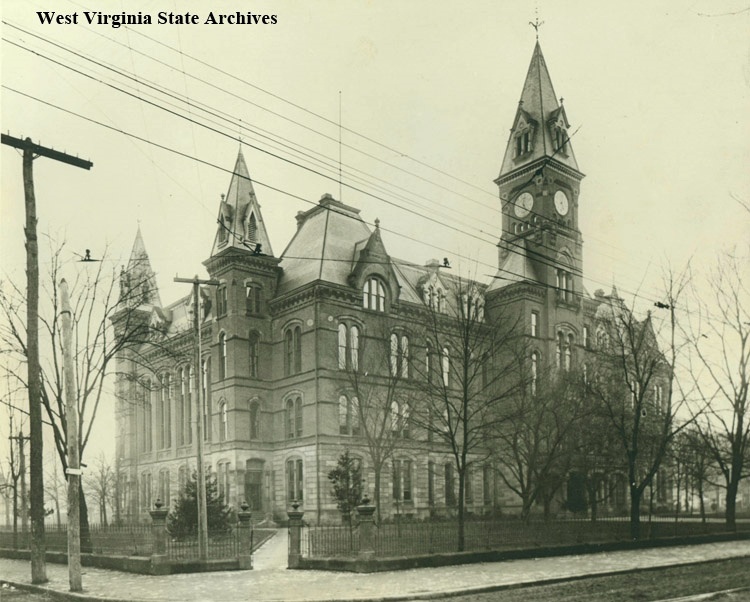But for an unfortunate fire a little more than 100 years ago, you might see this when you visit the West Virginia Capitol in Charleston.
In history as it was, there was a fire, and West Virginia needed a new capitol, which was completed by 1932. Nice job. Design by none other than Cass Gilbert, whose body of work is astonishing.
“Like the predecessor capitols Gilbert designed for Minnesota and Arkansas, the West Virginia capitol is dominated by its dome, which rises 292 feet above a colonnaded drum, and is embossed with gold leaf,” says the Cass Gilbert Society.

“The design was inspired by that of the Pantheon in Paris. The main entrances to the building are through monumental pedimented Corinthian porticos, set below the dome. Shallow domes at the ends of the main capitol block mark the location of the legislative chambers. The interior walls are faced with Vermont marble. The floor of the rotunda below the main dome is of Italian and Vermont marble.”
We stopped in Charleston on our way out of West Virginia on March 24. The warm, sunny weather of the day before had disappeared into rain and cold wind, as happens in the spring. So a walkabout outside the capitol wouldn’t have been pleasant. As I pointed my camera at the capitol, I had to brush water off.
Inside was another matter, nice and dry. A spare but impressive design, owing more than a little to Greek temples.


Gold leaf outside the dome. Inside, coal black. At least, that’s what I see. Incidentally, the neoclassical West Virginia capitol dome is the last of its kind among U.S. capitols — or, put another way, the most recent one. 

The West Virginia House of Delegates.
The seats were roped off, but you can get close enough to some of the backbenches – literally at the back – to take in some interesting detail. Nothing surprising is a U.S. flag or a cross or even a Don’t Tread On Me flag or what I take to be some coal – but what’s that earth-colored disk?
Does that particular delegate sympathize with flat-earthers? Seems unlikely. Also, if you look carefully at the wider shot of the House of Delegates, those blue disks seem to be on some, but not all of the desks. A sizable minority of the delegates are flat-earthers? No, I won’t assume it. People believe the damnedest things, or say they do, but even now that would be too far around the bend. Still, I wonder what that disk is supposed to mean, in its pride of place on the desks.
There isn’t a lot of statuary, but West Virginia could hardly forget Sen. Byrd, here in a Solonian pose.
Or that western Virginian, Stonewall Jackson. He didn’t quite live long enough to hear about the formation of West Virginia, though the estrangement of western Virginia was well underway in his lifetime. He probably had other things on his mind, anyway.
He doesn’t have a statue, but JFK rates a memorial.
A president, paying attention to West Virginia! Of course, it probably helped that the state was solidly Democratic in those days, but with a political history of more swinging than most of the states to its south.
Like many capitols, portraits of old ‘n’ moldy governors hang on the walls (and sometimes not so old). Here’s the first governor of West Virginia, Arthur I. Boreman, with that distinctly mid-century vibe (mid-19th century, that is), and Lincolnesque beard. Probably no accident.
Boreman pushed for the establishment of West Virginia, which by itself ought to be better known. After all, it was the only successful secession of the Civil War era.
Another gov: number three, William E. Stevenson, another member of the founding generation of West Virginians, which aligned with his pro-Union and anti-slavery convictions.
That’s a striking portrait, unusual among governors long gone but still hanging on the wall. Wonder if the artist took liberties, or whether the governor actually had movie-star good looks well before anyone saw any movies.